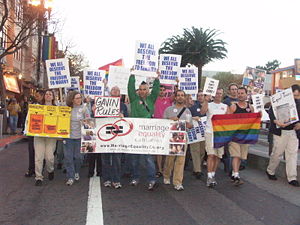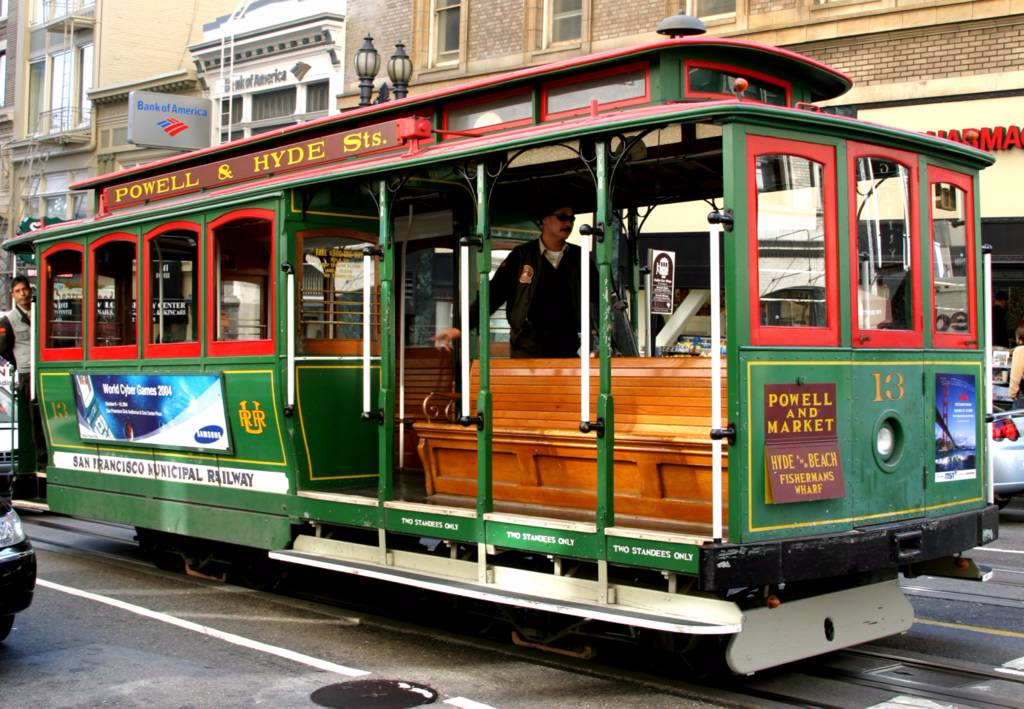San Francisco Bay Guardian, 2003-05-07, v37-n32 - 32zoo
Poster animals: Images of polar bears and elephants were used to promote 1997's $48 million bond initiative, but neither species will get new digs from the dough.
guardian photos by liz harrelson
Chow down: Zookeepers would have liked to see the needs of animals attended to before those of the people served by the new Leaping Lemur Café.
guardian photo by liz harrelson
The Zoo's Losers
The San Francisco Zoo pours millions into cosmetic changes while the animals wait for much-needed housing improvements.
By Savannah Blackwell
Stroll through the San Francisco Zoo's smoothly paved and freshly landscaped entryway, pass by the Wildlife Connection gift shop packed with stuffed animals and T-shirts, past the bronze statue of a cougar, and you'll reach the magnificent new $5 million Connie and Bob Lurie Education Center.
There, zoo visitors will find the Great Room, featuring a 28-foot-high vaulted ceiling — a contemporary take, it appears, on Henry VIII's Great Hall at Hampton Court. It's an impressive space, with a stone, floor-to-ceiling fireplace and eight koala-shaped sconces to provide gentle lighting. Portraits of the endangered species of North America hang on the walls.
Hungry visitors can dine at the new Leaping Lemur Café, where $3 million created a spacious circular structure of glass and wood. It's part of the $18 million spread around the new entrance, representing zoo director David Anderson's best effort to wow the public and convince San Francisco that the place — so long a source of unfulfilled promises — is finally turning itself around.
The new displays are as lofty and grand as the rhetoric of zoo management, which touts conservation-oriented goals in public statements and on banners at the new Lipman Family Lemur Forest exhibit. Yet despite promising to get the animals off concrete and onto grass, during the 1997 bond campaign aimed at funding a massive renovation, management has made few significant changes to the animals' housing conditions.
Hard ground
Ten years after the city turned the management of the zoo over to a private foundation and six years after voters approved the $48 million bond, the zoo's lone oran
gutan, Lipz (her companion, Rusty, has passed on), still resides on cement — despite the use of a sad-looking orangutan on campaign posters.
The situation has gotten so bad that zookeepers, who for years have held their tongues for fear of retaliation from management (in the past, those who have publicly criticized the zoo's operations quickly lost their jobs; see "The Zoo Blues," 5/19/99), are starting to make their concerns known. At the April 2 meeting of the Joint Zoo Committee, a few keepers spoke out, though others interviewed for this story asked that their names be withheld.
"The bottom line is they sold the public on this bond by saying the money would be spent on the existing animals," one zookeeper, who asked not to be named, told us. "But we don't feel that any of those animals have benefited at all. When you promise to spend the money on animal areas and then you don't, that seems fraudulent. We had this big chunk of change. This was our big chance, and they have just blown it. And that's frustrated a lot of people."
Anderson was not available May 5 for comment on whether the zoo broke election-related promises.
Of the $53 million spent so far on the zoo's $92 million renovation, only a small percentage has gone to animal exhibits. About $2.5 million went to the Lemur Forest — where 20 primates cavort in an open area — and about $700,000 went to fixing up the meerkat and prairie dog facilities in the Children's Zoo.
Zoo officials have failed to follow the key recommendations of a 2000 audit of the zoo's operations by Harvey Rose, the San Francisco Board of Supervisors' budget analyst, activists and zookeepers say. The city provides about $4 million of the zoo's $14 million annual operating budget.
The report strongly urged zoo officials to rearrange the scheduling of projects so that the first of the bond proceeds would go toward improving the animals’ living conditions. That way, according to Joel Parrot, the Oakland Zoo director who participated in the audit, the public would notice the new commitment to the most important part of the zoo and attendance would rise (see "Animals the Losers in S.F. Budget," 6/28/00).
Deputy director John Mann said zoo officials decided it made the most sense to start the renovations with the construction of Zoo Street, which is the path leading from the zoo's new gates. "It didn't make any sense to build exhibits without a way to get to them," he said.
But management's focus on visitor amenities instead of animal quarters has alarmed zookeepers, several of whom told us they questioned, for example, why the zoo spent nearly $3 million on a new cinder-block warehouse to house stock for the gift shop before they decided to build a much needed quarantine area for hoofed critters. The structure cost about $800,000 more than expected. Indeed, several projects have ballooned in cost — largely due to the need to go back and correct construction and design problems, our sources said. Mann denied the overruns were caused by errors. Rather, he said bond-related litigation tied up the project for two years, driving up costs.
Meanwhile, new animals have had to spend their first couple of months at the zoo confined in what zookeepers describe as inadequate spaces (according to a source who showed us the pen, Eric Van Duiker, an African antelope, did his time in a tiny, leafy, and frequently wet enclosure — with a piece of plywood leaning against a fence to shelter his water bowl).
"We thought [the warehouse] was supposed to be used for a hoofstock quarantine," another keeper told us. "But we're not even allowed to store food in there. It's a symbol of all this glitzy stuff they've built between here and the ocean.... But what's pissing me off about all that bond money is that those animals they used for the [campaign] posters — a polar bear, Asian elephant, orangutan, and lion — none of those animals will receive any bond money but are still stuck living in their old quarters."
Mann said that the quarantine will be constructed and that bids for the project are already underway.
Sordid past
For decades the San Francisco Zoo has been a source of sordid tales of animal mishaps. It has been faulted by the U.S. Department of Agriculture for problems that affect animal safety and welfare.
USDA inspectors make regular visits to the zoo, as is their policy for zoos that have ongoing problems, agency officials told us. In 1999 inspectors issued the zoo a ticket for failing "to maintain housing facilities, provide adequate food and failure to maintain sanitation of enclosures."
Most recently, in August 2002, USDA inspectors found rodent feces in the howler monkey exhibits. Dealing with the USDA's concerns more effectively was one of the issues raised in the 2000 audit.
A design flaw in the primate center contributed to the deaths of 53 of the 85 primates in the mid 1980s after the animals were exposed to their own feces for an extended period. In 1994, around the time management decided to lay off night staff, there were reports of late-night abuse of animals at the Children's Zoo (see “Sold,” 10/19/94).
Zoo officials admitted they erred in rushing to move in an Asian elephant companion for Tinkerbelle in time for the 1997 bond campaign. The companion, Calle, turned out to have tuberculosis. In December 2000 two koalas were kidnapped from their quarters; five giraffes have died since 2000; and in February the zoo lost a mother lion, Kita, when her uterus ruptured, likely due to an undetected cub that was trapped in the breach position.
Meanwhile, budget woes have hit. And management's plan for dealing with a budding $500,000 deficit will result in less of a zoo for the public to see, keepers say. For example, the zoo is planning to further reduce the number of animals. Two harbor seals will be shipped out, and instead of spending money on a new companion for Lipz, the zoo has given her her walking papers as well. And management would like to get rid of the two African elephants, Maybelle and Lulu, if they can find someplace that will take them.
The aye-aye exhibit, which provides quarters much more cramped than this endangered rain forest primate's natural surroundings, has failed. Duke University has asked for the return of the two rare primates. They never mated, and according to keepers, they had to breathe foul air from a ventilation system that hadn't been cleaned in years — until someone got fed up and called in the Occupational Safety and Health Administration.
Large sections of the zoo may also be shut down to save money, with the animals consolidated toward the center of the facility. Humans have also been affected. Six administrators — including Eva Sargent, who headed up conservation studies — have been let go. Management is planning to eliminate five full-time positions, as well as some part-time ones.
"Makes you wonder how real our commitment really is to conservation," one zoo insider, who asked not to be named, told us.
Zoo officials assure keepers and activists that the animals will be the next to benefit from the bond money. And their main plan for achieving that is the construction of a $20 million African savannah exhibit — in which various species will be allowed to roam and interact — which is set to open next year. Sounds good, but the zookeepers say the new project is already fraught with problems.
Amid concerns that the savannah isn't big enough to handle the number of animals planned for the space, the lions and elephants have already been dropped from the exhibit's roster. Recent experiences with the eland, a large African antelope slated to be on the savannah, indicate even more room to roam may be needed. Elands denuded their current pen of grass, and winter rains turned it into a muddy marsh. The situation was so bad that one zookeeper quietly called in the USDA. Some workers predict similar problems in the savannah.
Meanwhile, some apes are slated for better quarters, but the zoo could have a hard time coming up with the $15 million needed for those upgrades. And the plan to create a new South American exhibit has been scrapped even though the zoo spent $1 million on its design.
The fundamental issue, activists say, is that zookeepers have been left out of the planning process for constructing new animal quarters, even though zookeepers are the ones who know best what the animals need.
Working toward wonderful
The April 2 meeting of the Joint Zoo Committee — a panel formed of members of the Recreation and Park Commission and the San Francisco Zoological Society, the private foundation that runs the zoo — marked a first. Several zookeepers came forward and said they were unhappy with the way the bond projects have proceeded.
"It was clear our input was not really sought out," Chris Willers, a zookeeper who works with the African elephants, told us. "They were looking for our assistance and eager to get the keepers involved with the bond campaign. But once they had gotten the money, their interest evaporated. The majority of keepers do not feel they've been involved in the process."
Mann denied that zookeepers have been shut out of the planning process. "We need to follow up and show the keepers where their input went," he said.
But at long last, it appears that at least some city officials are starting to take notice that despite the zoo's old slogan "Wonderful things are happening at the zoo," the happenings at the zoo might not be so wonderful.
Sup. Jake McGoldrick has asked his colleagues on the Board of Supervisors to hold hearings on the 2000 audit (which has never been discussed at the board) to force the zoo to follow at least some of the recommendations, and at the board's May 6 meeting, board president Matt Gonzalez was scheduled to ask that a special committee be put together to consider the report. Many keepers and activists would like to see Anderson, the zoo's $140,000-a-year director, leave.
"It's time for new management at the zoo," longtime activist Phil Carleton said. "To not treat those people who helped get the bond passed with respect and not consult them on exhibits is the mark of poor leadership. They just don't value the animals as much as they do the income from things like restaurants and gift shops." ❖
E-mail Savannah Blackwell at savannah@sfbg.com.







